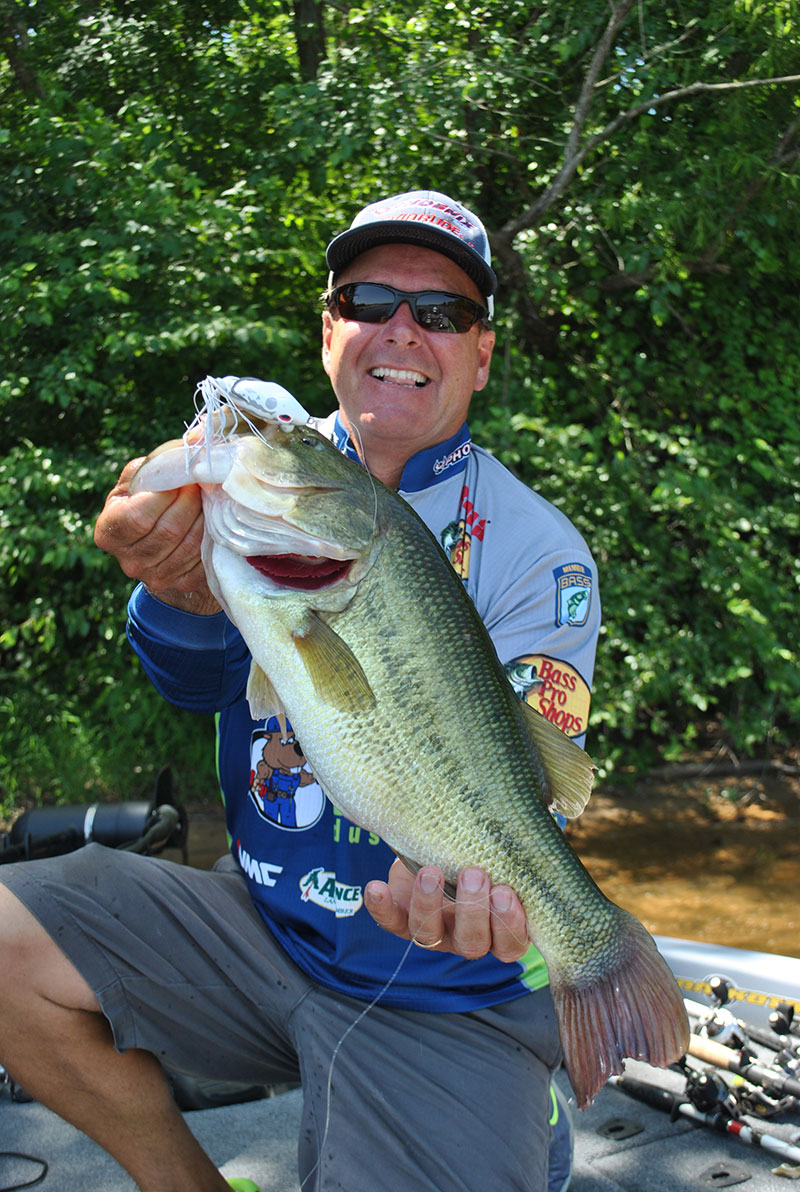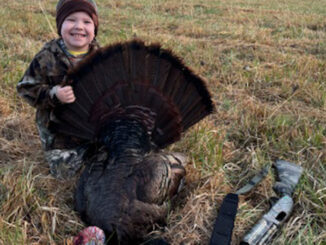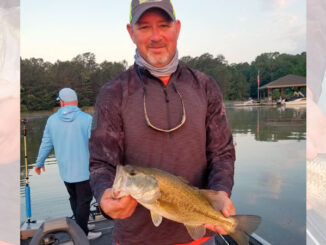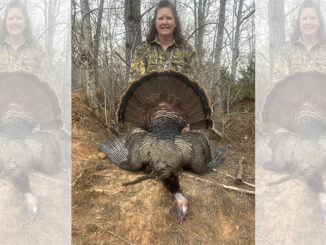
October in the Carolinas can be a time when it’s difficult to catch bass, because they’re doing a lot of things, and sometimes they can be so scattered out.
But it can also be a fun month to fish, because the weather is pleasant, there isn’t as much traffic on the lake, and you can fish the way you really like to fish and catch bass.
I love to fish topwater baits, even though they may not always be the most productive lures you can tie on when you’re in a tournament. But they are matchless when it comes to being fun, and for the next month or so, they may actually be the best baits to have tied on when you’re fishing a lake in the Carolinas.
At least one kind of topwater bait, in particular: a soft-plastic frog bait. In September and October, until the water temperature falls down to around 60, it can really be great.
In 1998, I won the FLW Tour Championship, then called the Forrest Wood Cup, on the Mississippi River out of Moline, Ill. Every fish I caught was on a frog, and I won $250,000, really big money. Of course, back when I was fishing on Lake Murray when I was much younger, $100 was big money, and I won a lot fishing a frog.
Vegetation is key
One of the reasons a frog can be so productive is that, even though we have so much diversity in our lake, shallow vegetation is still a place on most lakes where you can find good largemouth bass – whether it’s eelgrass, lily pads, gator grass, any kinds of reeds, even hydrilla. And topwater can be great around shallow vegetation, especially a frog or even a rat, which are both fished basically weedless and can get through some of the thickest vegetation around.
I like to fish topwater year-round, but a frog really gets good late in the summer and early in the fall. I will fish a frog until the water temperature gets into the low 60s. I have caught a lot of fish on frogs when the water temperature is in the 50s, all around the country, but in the Carolinas, I think that bite goes away when it gets below 60.
Pop it, walk it
I like to fish both a popping and a walking frog. A popping frog has a cupped face, like a Pop-R or any chugger bait. It pushes a lot of water and doesn’t move as far when you give your rod tip a twitch. A walking frog doesn’t have that cupped face. And while it doesn’t move as much water, it comes through vegetation better. So if you’re fishing thick vegetation, go with a walking frog. If you’re fishing stained water and the vegetation isn’t as thick, go with a popping frog.
I fish a Terminator frog – they make both kinds. It’s a fun way to fish this time of year. They come with a heavy VMC double hook, and it’s practically a weedless bait, so I’m not afraid to throw it in thick cover. Especially in September and October, I like to throw frogs in a bluegill color, because we might have some late bream hatches in places. So some panfish may still be up shallow and guarding fry. But frogs come in dozens of colors. Anglers have plenty to choose from. With the water temperature up in the mid- to high 60s, I might use something like white.
Over the years, I’ve used a big variety of tackle to fish frogs. When I won the FLW Championship, I fished a frog on monofilament, but not anymore. Now, I’m going to tie Sufix braid, 40- to 65-pound test, directly to the frog. I usually use 50- to 65-pound braid, especially fishing thick cover, because you don’t have to worry about a fish seeing the line.
I like to fish a frog on a 7-foot or 7-foot-6, medium-heavy Lew’s Signature Series rod. The length depends on the cover I’m fishing and how long the casts I’m going to make are. But for one thing, you need a fast tip, because you’re going to be moving both kinds of frogs with quick little twitches of the rod tip. I’m going to spool that braid on a Lew’s Super Duty reel – a really beefed-up reel. The gears on this one are really strong, and the reel isn’t light like most Lew’s reels. This one, you can crank down on the drag and use heavy line and basically winch a fish out of thick cover.
Cover water
My mindset is, I’m always trying to cover a lot of water in late September and October, making a lot of casts, keeping my trolling motor going all the time. I want to learn what’s happening on the lake that day. This time of year, things can change over a period of just a few days, and you have to check. But I’m going to keep moving and looking to fish shallow vegetation. As late October arrives, I’m going to be looking for heavy vegetation, because we start to get some cool nights, and the water temperature is falling. So those fish will bury right into that vegetation because it holds heat. So look for heavy vegetation but keep an open mind.
I’m going to throw right in the middle of the vegetation and work that frog out. If you’ve got thick vegetation that grows up from 6 inches to 2 feet above the surface, I’m going to fish the edges and holes in the grass. Fish are going to use those areas for cover and ambush points – imagine a brush pile sticking up a foot out of the water. If the vegetation is something like eelgrass that will just lay over, I’m going to throw right in the middle of it.
One thing to remember. Some fish are always in an area that aren’t going to bite the same baits that the majority of fish are biting. So if I get in an area and catch some fish on a frog, I’m going to go back over that stretch. I’ll spin the boat around and go back to where I started catching them – or even farther – and come back through that area with a Buckeye mop jig or a Senko. You can pick up a few more fish that way.
Of course, it won’t be as much fun as catching one on a frog, but a nice fish is fun anyway you can put it in the boat.
Mix it up: Some bass just aren’t interested in the frog, even in the same areas that you’ve caught some on it, so make sure to cover those same areas with a jig or Senko after the froggin’ is done.





Be the first to comment